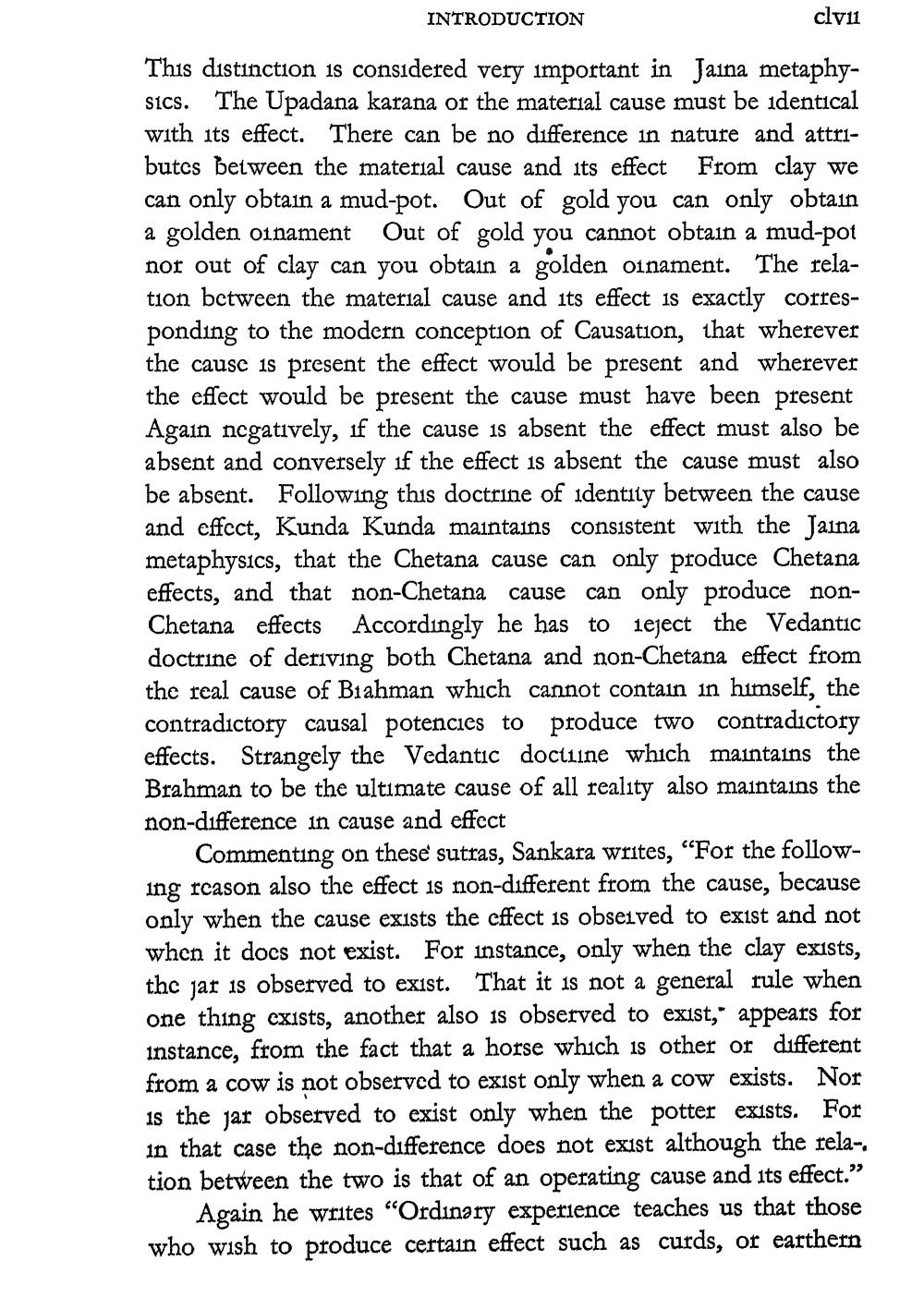________________
INTRODUCTION
clyu This distinction is considered very important in Jaina metaphy, sics. The Upadana karana or the material cause must be identical with its effect. There can be no difference in nature and attributcs between the material cause and its effect From clay we can only obtain a mud-pot. Out of gold you can only obtain a golden oinament Out of gold you cannot obtain a mud-pot nor out of clay can you obtain a golden oinament. The relation between the material cause and its effect is exactly corresponding to the modern conception of Causation, that wherever the cause is present the effect would be present and wherever the effect would be present the cause must have been present Again negatively, if the cause is absent the effect must also be absent and conversely if the effect is absent the cause must also be absent. Following this doctrine of identity between the cause and effect, Kunda Kunda maintains consistent with the Jaina metaphysics, that the Chetana cause can only produce Chetana effects, and that non-Chetana cause can only produce nonChetana effects Accordingly he has to neject the Vedantic doctrine of deriving both Chetana and non-Chetana effect from the real cause of Brahman which cannot contain in himself, the contradictory causal potencies to produce two contradictory effects. Strangely the Vedantic doctiine which maintains the Brahman to be the ultimate cause of all reality also maintains the non-difference in cause and effect
Commenting on these sutras, Sankara writes, “For the following reason also the effect is non-different from the cause, because only when the cause exists the effect is obseived to exist and not when it does not exist. For instance, only when the clay exists, the jar is observed to exist. That it is not a general rule when one thing exists, another also is observed to exist," appears for instance, from the fact that a horse which is other or different from a cow is not observed to exist only when a cow exists. Nor is the jar observed to exist only when the potter exists. For in that case the non-difference does not exist although the rela-. tion between the two is that of an operating cause and its effect."
Again he writes "Ordinary experience teaches us that those who wish to produce certain effect such as curds, or earthern




